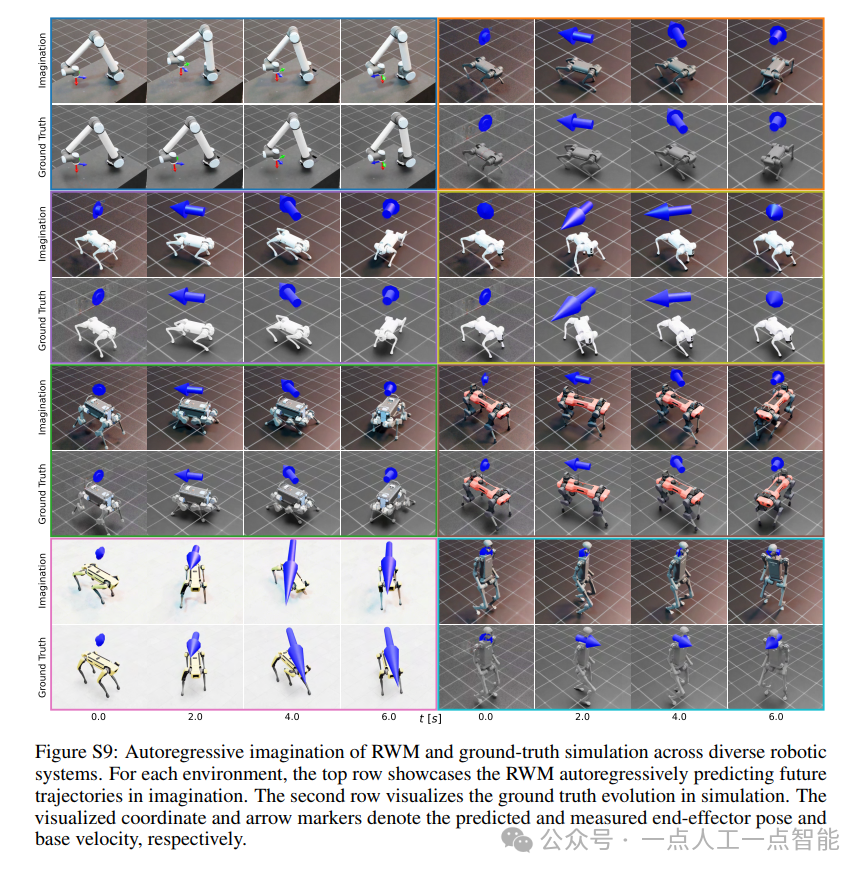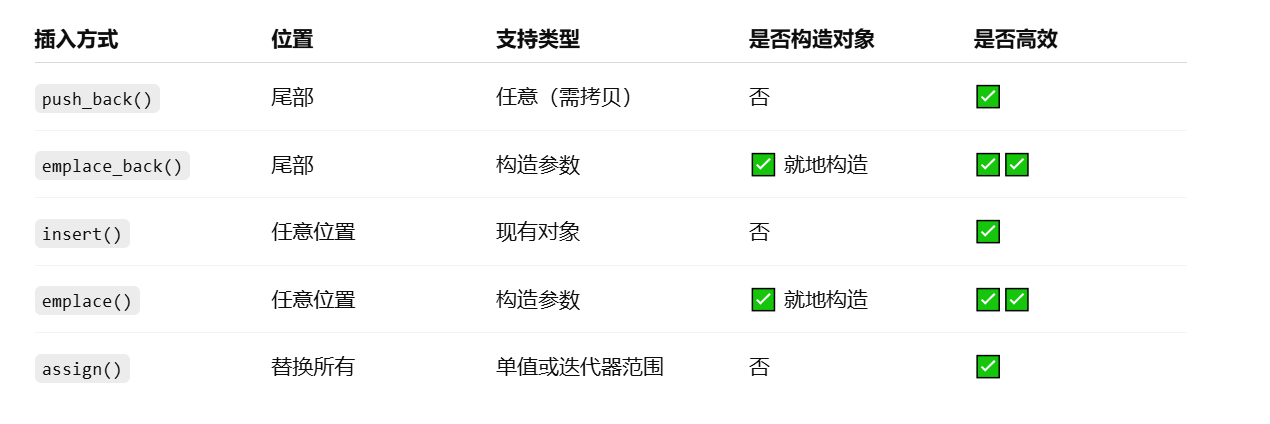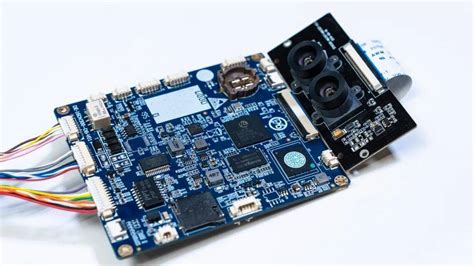Direct Preference Optimization (DPO) 简介与流程解析:中英双语
Direct Preference Optimization (DPO) 简介与流程解析
Direct Preference Optimization (DPO) 是一种基于人类偏好的强化学习优化方法,用于训练语言模型,使其更好地满足用户需求或偏好。本文将详细介绍 DPO 的核心思想、优化流程,并结合代码示例分析其具体实现方式。
1. 什么是 DPO?
DPO 是一种优化策略,它通过最小化损失函数来直接学习人类偏好数据,而无需依赖复杂的强化学习框架,如 Proximal Policy Optimization (PPO)。
DPO 的关键思想:
- 使用人类偏好数据集来构建训练样本,包含“偏好”和“非偏好”对比项。
- 通过直接优化偏好损失函数,引导策略模型学习偏好分布,同时控制 KL 散度,避免模型过度偏离参考分布。
DPO 的优势:
- 不依赖环境交互: DPO 在离线数据上训练,无需与环境实时交互,降低了训练复杂度。
- 直接利用人类偏好: 简化了强化学习的步骤,将人类偏好直接应用于优化过程。
- 更稳定的训练过程: 通过 KL 散度约束保持策略分布平稳,减少训练不稳定性。
2. DPO 的主要流程
Step 1: 数据集准备
假设我们有一个人类偏好标注的数据集 ( D D D):
D = { ( x i , y w i , y l i ) } i = 1 N D = \{(x_i, y_w^i, y_l^i)\}_{i=1}^N D={(xi,ywi,yli)}i=1N
其中:
- ( x i x_i xi):提示(prompt)或输入样本。
- ( y w i y_w^i ywi):偏好的输出(preferred completion)。
- ( y l i y_l^i yli):不偏好的输出(less preferred completion)。
示例数据:
| Prompt | Preferred Output (( y w y_w yw)) | Less Preferred Output (( y l y_l yl)) |
|---|---|---|
| “Summarize this text.” | “Key points are…” | “The main topic is…” |
| “Translate to French.” | “Bonjour tout le monde.” | “Salut à tous.” |
Step 2: 初始化参考模型 (( π r e f \pi_{ref} πref))
- 如果已有监督微调模型 (( π S F T \pi_{SFT} πSFT)),则直接使用它作为参考模型:
π r e f = π S F T \pi_{ref} = \pi_{SFT} πref=πSFT
- 如果没有 ( π S F T \pi_{SFT} πSFT),则通过最大似然估计 (MLE) 预训练一个参考模型:
π r e f = arg max π E ( x , y w ) ∼ D [ log π ( y w ∣ x ) ] \pi_{ref} = \arg\max_{\pi} \mathbb{E}_{(x, y_w) \sim D} [\log \pi(y_w | x)] πref=argπmaxE(x,yw)∼D[logπ(yw∣x)]
解释:
参考模型用于提供基准分布,帮助控制训练过程中的分布偏移,确保策略模型不会偏离参考分布太远。
Step 3: 损失函数定义与优化
DPO 的损失函数旨在优化策略模型 ( π θ \pi_\theta πθ) 相对于参考模型 ( π r e f \pi_{ref} πref) 的表现,同时引入 KL 散度惩罚项控制更新幅度:
损失函数公式:
L D P O ( θ ) = − log σ ( β [ log π θ ( y w ∣ x ) π θ ( y l ∣ x ) − log π r e f ( y w ∣ x ) π r e f ( y l ∣ x ) ] ) L_{DPO}(\theta) = - \log \sigma\left(\beta \left[\log \frac{\pi_\theta(y_w | x)}{\pi_\theta(y_l | x)} - \log \frac{\pi_{ref}(y_w | x)}{\pi_{ref}(y_l | x)}\right]\right) LDPO(θ)=−logσ(β[logπθ(yl∣x)πθ(yw∣x)−logπref(yl∣x)πref(yw∣x)])
其中:
- ( β \beta β):控制 KL 散度强度的超参数。
- ( σ ( ⋅ ) \sigma(\cdot) σ(⋅)):Sigmoid 函数,用于平滑处理。
- ( π θ \pi_\theta πθ):当前策略模型的输出概率。
- ( π r e f \pi_{ref} πref):参考模型的输出概率。
直观解释:
- 比较策略模型与参考模型在偏好和非偏好输出上的概率比率,优化模型使得偏好输出的概率更大,同时限制变化幅度。
代码实现:
摘录自原paper: https://arxiv.org/pdf/2305.18290
import torch.nn.functional as Fdef dpo_loss(pi_logps, ref_logps, yw_idxs, yl_idxs, beta):"""计算 DPO 损失函数Args:pi_logps: 策略模型的对数概率, shape (B,)ref_logps: 参考模型的对数概率, shape (B,)yw_idxs: 偏好输出的索引, shape (T,)yl_idxs: 不偏好输出的索引, shape (T,)beta: KL 惩罚项超参数Returns:losses: 损失值rewards: 奖励信号"""# 取出偏好与非偏好对应的对数概率pi_yw_logps, pi_yl_logps = pi_logps[yw_idxs], pi_logps[yl_idxs]ref_yw_logps, ref_yl_logps = ref_logps[yw_idxs], ref_logps[yl_idxs]# 计算策略与参考模型的概率比率pi_logratios = pi_yw_logps - pi_yl_logpsref_logratios = ref_yw_logps - ref_yl_logps# 损失函数losses = -F.logsigmoid(beta * (pi_logratios - ref_logratios))# 奖励信号rewards = beta * (pi_logps - ref_logps).detach()return losses, rewards
Step 4: 模型训练设置
摘录自原paper: https://arxiv.org/pdf/2305.18290
-
优化器与超参数设置:
- 使用 RMSprop 优化器。
- 学习率:( 1 × 1 0 − 6 1 \times 10^{-6} 1×10−6)。
- 批量大小:64。
- 学习率线性预热 150 步,从 0 增加到 ( 1 × 1 0 − 6 1 \times 10^{-6} 1×10−6)。
-
特定任务调整:
- 摘要任务:将 ( β = 0.5 \beta = 0.5 β=0.5)。
-
训练过程:
- 从参考模型加载初始参数。
- 根据数据集批量计算损失和奖励。
- 逐步更新策略模型,平衡偏好学习和 KL 散度控制。
3. DPO 的实际应用与优势分析
应用场景:
- 对话生成:
- 使用人类反馈优化对话质量,使模型更符合用户期望。
- 摘要生成:
- 根据偏好数据训练模型生成更简洁或更详细的摘要。
- 翻译任务:
- 微调翻译模型使其符合语言习惯和文化背景。
与传统方法对比:
| 方法 | 特点 | 优势 |
|---|---|---|
| PPO | 在线交互式优化,依赖环境反馈 | 强鲁棒性,但实现复杂,训练成本高 |
| DPO | 离线偏好优化,无需环境交互,直接优化损失函数 | 简单易实现,训练更稳定,适合大规模预训练模型微调 |
4. 总结
DPO 提供了一种高效稳定的方式,将人类偏好直接融入语言模型训练过程。通过对比参考模型与策略模型的输出概率,并结合 KL 散度控制,DPO 避免了传统强化学习中的不稳定性,尤其适合大规模预训练模型的偏好微调任务。
关键点回顾:
- 准备偏好数据集,标注“偏好”和“非偏好”输出。
- 初始化参考模型,确保稳定的分布基础。
- 计算损失函数,通过 KL 散度控制更新幅度。
- 利用超参数调优,平衡偏好优化与探索能力。
DPO 简化了强化学习流程,为语言模型的微调提供了一种高效且实用的解决方案。
Introduction to Direct Preference Optimization (DPO): Process and Implementation
Direct Preference Optimization (DPO) is a reinforcement learning-based optimization method that trains language models to better align with user preferences. This blog provides a detailed explanation of DPO’s core concepts, step-by-step pipeline, and practical implementation using code examples.
1. What is DPO?
DPO is an optimization strategy that directly learns from human preference data by minimizing a preference-based loss function, eliminating the need for complex reinforcement learning frameworks like Proximal Policy Optimization (PPO).
Key Ideas of DPO:
- Utilize human preference datasets containing pairs of “preferred” and “less preferred” completions.
- Optimize a preference-based loss function to guide the policy model while controlling KL divergence to prevent distributional shifts.
Advantages of DPO:
- No Environment Interaction Required: DPO trains offline, reducing complexity compared to traditional reinforcement learning.
- Direct Use of Human Preferences: Simplifies optimization by directly leveraging preference data.
- Stable Training Process: KL divergence constraints ensure smooth updates and prevent instability.
2. Main Workflow of DPO
Step 1: Prepare the Dataset
Assume we have a human-annotated preference dataset ( D D D):
D = { ( x i , y w i , y l i ) } i = 1 N D = \{(x_i, y_w^i, y_l^i)\}_{i=1}^N D={(xi,ywi,yli)}i=1N
Where:
- ( x i x_i xi): Prompt or input example.
- ( y w i y_w^i ywi): Preferred output (completion).
- ( y l i y_l^i yli): Less preferred output.
Sample Data:
| Prompt | Preferred Output (( y w y_w yw)) | Less Preferred Output (( y l y_l yl)) |
|---|---|---|
| “Summarize this text.” | “Key points are…” | “The main topic is…” |
| “Translate to French.” | “Bonjour tout le monde.” | “Salut à tous.” |
Step 2: Initialize Reference Model (( π r e f \pi_{ref} πref))
- If a supervised fine-tuned model (( π S F T \pi_{SFT} πSFT)) is available, use it as the reference model:
π r e f = π S F T \pi_{ref} = \pi_{SFT} πref=πSFT
- If ( π S F T \pi_{SFT} πSFT) is not available, pre-train a reference model via Maximum Likelihood Estimation (MLE):
π r e f = arg max π E ( x , y w ) ∼ D [ log π ( y w ∣ x ) ] \pi_{ref} = \arg\max_{\pi} \mathbb{E}_{(x, y_w) \sim D} [\log \pi(y_w | x)] πref=argπmaxE(x,yw)∼D[logπ(yw∣x)]
Explanation:
The reference model provides a baseline distribution that prevents distributional shifts during training, ensuring stability.
Step 3: Define and Optimize the Loss Function
DPO’s loss function is designed to optimize the policy model ( π θ \pi_\theta πθ) relative to the reference model ( π r e f \pi_{ref} πref) while introducing a KL-divergence penalty to constrain updates.
Loss Function Formula:
L D P O ( θ ) = − log σ ( β [ log π θ ( y w ∣ x ) π θ ( y l ∣ x ) − log π r e f ( y w ∣ x ) π r e f ( y l ∣ x ) ] ) L_{DPO}(\theta) = - \log \sigma\left(\beta \left[\log \frac{\pi_\theta(y_w | x)}{\pi_\theta(y_l | x)} - \log \frac{\pi_{ref}(y_w | x)}{\pi_{ref}(y_l | x)}\right]\right) LDPO(θ)=−logσ(β[logπθ(yl∣x)πθ(yw∣x)−logπref(yl∣x)πref(yw∣x)])
Where:
- ( β \beta β): Temperature parameter controlling KL penalty strength.
- ( σ ( ⋅ ) \sigma(\cdot) σ(⋅)): Sigmoid function for smoothing.
- ( π θ \pi_\theta πθ): Current policy model probabilities.
- ( π r e f \pi_{ref} πref): Reference model probabilities.
Intuitive Explanation:
- Compare the probability ratios between preferred and less preferred outputs.
- Optimize the model to increase probabilities for preferred outputs while limiting deviation from the reference model.
Code Implementation:
import torch.nn.functional as Fdef dpo_loss(pi_logps, ref_logps, yw_idxs, yl_idxs, beta):"""Compute DPO loss.Args:pi_logps: Log-probabilities from the policy model, shape (B,)ref_logps: Log-probabilities from the reference model, shape (B,)yw_idxs: Indices of preferred completions, shape (T,)yl_idxs: Indices of less preferred completions, shape (T,)beta: KL penalty strengthReturns:losses: Loss valuesrewards: Reward signals"""# Extract log-probs for preferred and less preferred completionspi_yw_logps, pi_yl_logps = pi_logps[yw_idxs], pi_logps[yl_idxs]ref_yw_logps, ref_yl_logps = ref_logps[yw_idxs], ref_logps[yl_idxs]# Compute log-ratiospi_logratios = pi_yw_logps - pi_yl_logpsref_logratios = ref_yw_logps - ref_yl_logps# Compute losslosses = -F.logsigmoid(beta * (pi_logratios - ref_logratios))# Compute rewardsrewards = beta * (pi_logps - ref_logps).detach()return losses, rewards
Step 4: Model Training Settings
-
Optimizer and Hyperparameters:
- Optimizer: RMSprop.
- Learning Rate: ( 1 × 1 0 − 6 1 \times 10^{-6} 1×10−6).
- Batch Size: 64.
- Linear warmup: Gradually increase learning rate from 0 to ( 1 × 1 0 − 6 1 \times 10^{-6} 1×10−6) over 150 steps.
-
Task-Specific Adjustments:
- For summarization: Set ( β = 0.5 \beta = 0.5 β=0.5).
-
Training Process:
- Load initial parameters from the reference model.
- Compute losses and rewards in batches using the preference dataset.
- Update the policy model step-by-step, balancing preference optimization and KL divergence constraints.
3. Applications and Advantages
Use Cases:
- Dialogue Generation:
- Optimize conversational quality to better match user expectations.
- Summarization Tasks:
- Train models to generate concise or detailed summaries based on preferences.
- Translation Models:
- Fine-tune translations to match linguistic and cultural nuances.
Comparison with Traditional Methods:
| Method | Features | Advantages |
|---|---|---|
| PPO | Online optimization, requires environment feedback | Robust but complex implementation and expensive |
| DPO | Offline preference optimization, no interaction needed | Simple implementation, more stable training |
4. Conclusion
DPO provides an efficient and stable method for integrating human preferences into language model training. By comparing probabilities between preferred and less preferred outputs and applying KL-divergence constraints, DPO avoids instability often seen in traditional reinforcement learning, making it ideal for fine-tuning large language models.
Key Takeaways:
- Prepare a preference dataset labeled with “preferred” and “less preferred” outputs.
- Initialize a reference model for stable training.
- Optimize the preference loss function while controlling distribution shifts.
- Tune hyperparameters to balance preference learning and exploration.
DPO simplifies reinforcement learning and offers a practical solution for preference-based fine-tuning of pre-trained language models.
参考
[1] DPO(Direct Preference Optimization)算法解释:中英双语
后记
2024年12月26日21点19分于上海,在GPT4o大模型辅助下完成。
相关文章:
 简介与流程解析:中英双语)
Direct Preference Optimization (DPO) 简介与流程解析:中英双语
Direct Preference Optimization (DPO) 简介与流程解析 Direct Preference Optimization (DPO) 是一种基于人类偏好的强化学习优化方法,用于训练语言模型,使其更好地满足用户需求或偏好。本文将详细介绍 DPO 的核心思想、优化流程,并结合代码…...

fisco-bcos手动搭建webase启动注意事项
手动搭建webase-front启动注意事项 Java环境变量:1.8.301时候的错误 一直提示节点连接不上,无法连接chanale端口 这是官方提供的解决办法Help wanted: solution for secp256k1 being disabled Issue #470 FISCO-BCOS/java-sdk Java SDK 2.x连接节点失败…...

ospf 的 状态机详解
OSPF(开放最短路径优先,Open Shortest Path First)协议的状态机是其核心部分之一,用于确保路由器之间的邻接关系(neighbor relationship)建立和路由信息的交换。OSPF的状态机模型由多个状态组成,…...

TP5 动态渲染多个Layui表格并批量打印所有表格
记录: TP5 动态渲染多个Layui表格每个表格设置有2行表头,并且第一行表头在页面完成后动态渲染显示内容每个表格下面显示统计信息可点击字段排序一次打印页面上的所有表格打印页面上多个table时,让每个table单独一页 后端代码示例: /*** Nod…...

spring专题笔记(六):bean的自动装配(自动化注入)-根据名字进行自动装配、根据类型进行自动装配。代码演示,通俗易懂。
目录 一、根据名字进行自动装配--byName 二、根据类型进行自动装配 byType 本文章主要是介绍spring的自动装配机制, 用代码演示spring如何根据名字进行自动装配、如何根据类型进行自动装配。代码演示,通俗易懂。 一、根据名字进行自动装配--byName Us…...

监听器listener
文章目录 监听器( listener)对Application内置对象监听的语法和配置对session内置对象监听的语法和配置 监听器( listener) 对象与对象的关系: 继承关联 tomcat一启动创建的顺序:监听器,config,application(全局初始化参数)&am…...

重温设计模式--10、单例模式
文章目录 单例模式(Singleton Pattern)概述单例模式的实现方式及代码示例1. 饿汉式单例(在程序启动时就创建实例)2. 懒汉式单例(在第一次使用时才创建实例) 单例模式的注意事项应用场景 C代码懒汉模式-经典…...

Flutter动画学习二
如何在 Flutter 中使用自定义动画和剪裁(clipping)实现一个简单的动画效果。 前置知识点学习 AnimationController AnimationController 是 Flutter 动画框架中的一个核心类,用于控制动画的生命周期和状态。它提供了一种灵活的方式来定义动…...
【React Native版】)
讯飞语音听写WebApi(流式)【React Native版】
假设已有 Base64 编码的音频文件(16kHz, s16le, pcm) 1、获取websocket url import * as CryptoJS from crypto-js;/*** 获取websocket url*/ const getWebSocketUrl () > {const config {// 请求地址hostUrl: "wss://iat-api.xfyun.cn/v2/iat",host: "i…...
框架(一)))
【Linux编程】一个基于 C++ 的 TCP 客户端异步(epoll)框架(一))
TcpClient 类的设计与实现:一个基于 C 的 TCP 客户端框架 在现代网络编程中,TCP(传输控制协议)客户端是实现网络通信的基础组件之一。本文将详细介绍一个基于 C 的 TcpClient 类的设计与实现,该类提供了创建 TCP 连接…...

PG备份恢复--pg_dump
pg_dump pg_dump 是一个逻辑备份工具。使用 pg_dump 可以在数据库处于使用状态下进行一致 性的备份,它不会阻塞其他用户对数据库的访问 。 一致性备份是 pg_dump 开始运行时,给数据库打了一个快照,且在 pg_dump 运行过程 中发生的更新将不会被备份。 …...

pikachu靶场搭建详细步骤
一、靶场下载 点我去下载 二、靶场安装 需要的环境: mysqlApaches(直接使用小皮面板Phpstudy:https://www.xp.cn/),启动他们 设置网站,把靶场的路径对应过来 对应数据库的信息 由于没有核对数据库的信…...
:装饰器讲解)
HarmonyOS NEXT开发进阶(五):装饰器讲解
一、Provide Consume 父组件与子组件的子组件(官方叫法:后代组件)双向同步数据(即,父组件与后代组件可以相互操作 Provide 修饰的数据) 注意:Provide 与 Consume声明的变量名必须一致。 import {TestChild } from .…...

【编译原理】往年题汇总(山东大学软件学院用)
🌈 个人主页:十二月的猫-CSDN博客 🔥 系列专栏: 🏀编译原理_十二月的猫的博客-CSDN博客 💪🏻 十二月的寒冬阻挡不了春天的脚步,十二点的黑夜遮蔽不住黎明的曙光 目录 1. 前言 2. …...
)
【漏洞复现】F5 BIG-IP Next Central Manager SQL注入漏洞(CVE-2024-26026)
免责声明 请勿利用文章内的相关技术从事非法测试,由于传播、利用此文所提供的信息而造成的任何直接或者间接的后果及损失,均由使用者本人负责,作者不为此承担任何责任。工具来自网络,安全性自测,如有侵权请联系删除。本次测试仅供学习使用,如若非法他用,与平台和本文作…...

设计模式-创建型-单例模式
1. 单例模式简介 单例模式(Singleton Pattern)是一种常见的创建型设计模式,它确保一个类只有一个实例,并提供全局访问点。在很多情况下,我们只希望某个类在整个应用程序中有一个唯一的实例,且该实例需要在…...

VBA技术资料MF243:利用第三方软件复制PDF数据到EXCEL
我给VBA的定义:VBA是个人小型自动化处理的有效工具。利用好了,可以大大提高自己的工作效率,而且可以提高数据的准确度。“VBA语言専攻”提供的教程一共九套,分为初级、中级、高级三大部分,教程是对VBA的系统讲解&#…...

【2024最新】基于Python+Mysql+django的水果销售系统Lw+PPT
作者:计算机搬砖家 开发技术:SpringBoot、php、Python、小程序、SSM、Vue、MySQL、JSP、ElementUI等,“文末源码”。 专栏推荐:SpringBoot项目源码、Vue项目源码、SSM项目源码、微信小程序源码 精品专栏:Java精选实战项…...

一种寻路的应用
应用背景 利用长途车进行货物转运的寻路计算。例如从深圳到大连。可以走有很多条长途车的路线。需要根据需求计算出最合适路线。不同的路线的总里程数、总价、需要的时间不一样。客户根据需求进行选择。主要有一些细节: 全国的长途车车站的数据的更新: …...

编译openssl遇到错误Parse errors: No plan found in TAP output的解决方法
在编译openssl时 tar -zxvf openssl-1.1.1p.tar.gz cd openssl-1.1.1p ./config --prefix/usr --openssldir/etc/ssl --shared zlib make make test 遇到错误 Parse errors: No plan found in TAP output 解决方法: yum install perl-Test-Simple...

未来机器人的大脑:如何用神经网络模拟器实现更智能的决策?
编辑:陈萍萍的公主一点人工一点智能 未来机器人的大脑:如何用神经网络模拟器实现更智能的决策?RWM通过双自回归机制有效解决了复合误差、部分可观测性和随机动力学等关键挑战,在不依赖领域特定归纳偏见的条件下实现了卓越的预测准…...

SCAU期末笔记 - 数据分析与数据挖掘题库解析
这门怎么题库答案不全啊日 来简单学一下子来 一、选择题(可多选) 将原始数据进行集成、变换、维度规约、数值规约是在以下哪个步骤的任务?(C) A. 频繁模式挖掘 B.分类和预测 C.数据预处理 D.数据流挖掘 A. 频繁模式挖掘:专注于发现数据中…...

CentOS下的分布式内存计算Spark环境部署
一、Spark 核心架构与应用场景 1.1 分布式计算引擎的核心优势 Spark 是基于内存的分布式计算框架,相比 MapReduce 具有以下核心优势: 内存计算:数据可常驻内存,迭代计算性能提升 10-100 倍(文档段落:3-79…...

离线语音识别方案分析
随着人工智能技术的不断发展,语音识别技术也得到了广泛的应用,从智能家居到车载系统,语音识别正在改变我们与设备的交互方式。尤其是离线语音识别,由于其在没有网络连接的情况下仍然能提供稳定、准确的语音处理能力,广…...

归并排序:分治思想的高效排序
目录 基本原理 流程图解 实现方法 递归实现 非递归实现 演示过程 时间复杂度 基本原理 归并排序(Merge Sort)是一种基于分治思想的排序算法,由约翰冯诺伊曼在1945年提出。其核心思想包括: 分割(Divide):将待排序数组递归地分成两个子…...

python打卡第47天
昨天代码中注意力热图的部分顺移至今天 知识点回顾: 热力图 作业:对比不同卷积层热图可视化的结果 def visualize_attention_map(model, test_loader, device, class_names, num_samples3):"""可视化模型的注意力热力图,展示模…...

表单设计器拖拽对象时添加属性
背景:因为项目需要。自写设计器。遇到的坑在此记录 使用的拖拽组件时vuedraggable。下面放上局部示例截图。 坑1。draggable标签在拖拽时可以获取到被拖拽的对象属性定义 要使用 :clone, 而不是clone。我想应该是因为draggable标签比较特。另外在使用**:clone时要将…...

C++中vector类型的介绍和使用
文章目录 一、vector 类型的简介1.1 基本介绍1.2 常见用法示例1.3 常见成员函数简表 二、vector 数据的插入2.1 push_back() —— 在尾部插入一个元素2.2 emplace_back() —— 在尾部“就地”构造对象2.3 insert() —— 在任意位置插入一个或多个元素2.4 emplace() —— 在任意…...

职坐标物联网全栈开发全流程解析
物联网全栈开发涵盖从物理设备到上层应用的完整技术链路,其核心流程可归纳为四大模块:感知层数据采集、网络层协议交互、平台层资源管理及应用层功能实现。每个模块的技术选型与实现方式直接影响系统性能与扩展性,例如传感器选型需平衡精度与…...

触发DMA传输错误中断问题排查
在STM32项目中,集成BLE模块后触发DMA传输错误中断(DMA2_Stream1_IRQHandler进入错误流程),但单独运行BLE模块时正常,表明问题可能源于原有线程与BLE模块的交互冲突。以下是逐步排查与解决方案: 一、问题根源…...
